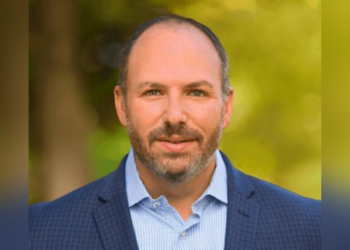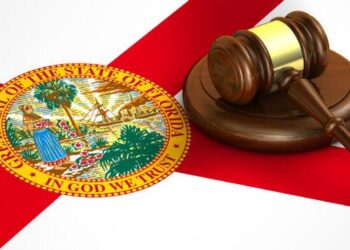As if spiraling gas prices weren’t enough, motorists across Arizona and the nation are paying more for auto insurance as repair costs and more crowded roads push premium rates higher.
After giving customers premium credits and refunds in 2020 as people stayed home and insurance claims plummeted due to the COVID-19 pandemic, auto insurers are raising rates to help cover higher claims costs driven by increased driving, higher repair costs and other factors.
Several large insurers including Geico, Allstate, Progressive and Farmers implemented auto-premium rate increases since mid-2021, rate filings with the Arizona Department of Insurance and Financial Institutions show.
Geico Casualty Co., Arizona’s largest private-passenger auto liability insurer with a market share of nearly 15%, posted an 8% rate increase in November, along with some fractional rate reductions for some coverages.
State Farm Mutual, the state’s second-largest auto liability insurer filed an 0.4% rate increase for its Arizona private-passenger auto customers, effective March 1.
Progressive Advanced Insurance Co. and sister Progressive Preferred, third- and fourth-largest insurers by market share, respectively, posted Arizona auto-policy rate increases ranging from 2.5% to 6.9% since mid-2021, while Farmers of Arizona filed for increases totaling more than 8%.
Allstate Fire & Casualty, the state’s sixth-largest personal auto liability insurer, filed a 7% increase effective this month.
Arizona does not require auto insurers to get state approval before changing rates, so long as the overall market is considered competitive.
Insurers say they need higher premiums to offset higher claims losses since the height of the pandemic, citing factors including increased driving and higher repair costs driven by supply-chain issues and labor shortages.
Insurance companies moved to provide premium discounts and other relief to policyholders starting in March 2020, when it quickly became apparent that insurance claims were plummeting as COVID-19 shutdowns kept many people off the roads.
“No question that at the beginning of the pandemic, miles driven and claims fell off a cliff and during that unique period of time insurers did a lot of things to try to provide some relief to their policyholders,” said Robert Passmore, vice president of auto and claims policy at the American Property Casualty Insurance Association.
“It’s taken a while, but we’re now back to the point where people are driving as much or more than they were pre-pandemic,” said Passmore, citing data from the National Highway Transportation Administration showing miles traveled reached near-pandemic levels and fatalities increased in 2021.
At the same time, Passmore noted, the severity of accidents including fatalities have risen and repair costs have increased.
State Farm, which as a mutual insurance company is owned by its policyholders, has tried to respond to changing auto claims and costs while minimizing the impact on customers, company spokesman Sevag Sarkissian said.
State Farm provided over $4 billion in dividends and rate cuts to its auto-insurance customers at the onset of COVID-19 in early 2020. The company pared back a special premium discount in February 2021 with a 3% rate increase in Arizona.
“Our approach is to make incremental adjustments based on driving behaviors to help minimize the impact to customers,” Sarkissian said. “Auto claim costs are increasing in part due to a rise in the cost of labor, materials and supply chain-related issues. Although miles driven, claim volume and severity have increased, State Farm auto rates remain below pre-COVID-19 levels.”
A report issued by the American Property Casualty Insurance Association in February said higher claims costs are being driven by increased driving and worse driving behavior, higher medical costs, increased injury-claim settlements, increased injury severity in auto crashes and skyrocketing auto repair and replacement costs.
As a result, Arizona motorists are seeing increases now after getting a break during the height of the pandemic.
While Arizona has no power to preapprove auto insurance rates, the state insurance department reviews rate filings to make sure they are not unfairly discriminatory and meet other legal requirements, said Erin Klug, assistant director of product filing and compliance division at the Arizona Department of Insurance and Financial Institutions.
“The department can’t find a rate excessive as long as there is ample competition,” Klug said. “The department scrutinizes every rate filing it receives to make sure it is justified and meets the requirements of the law.”
While California was the only state to require insurers to give auto policyholders a break on their premiums as claims plummeted amid COVID-19 shutdowns, Arizona was among many states that encouraged insurers to offer premium relief, Klug said.
Some offered temporary premium discounts or credits, while others changed their base rates, and most set up special programs to delay policy cancellations for non-payment for customers hit hard by COVID-19, she noted.
Industrywide, insurers refunded or discounted about $14 billion in response to falling claims, according to the insurance association.
But some consumer advocates say the industry should have given policyholders a much bigger break and ended up pocketing much of that savings from the steep decline in auto losses in 2020.
Insurers should have returned about $30 billion more to policyholders, based on lower losses, including $648 million in Arizona, says a report last August by the Consumer Federation of America and the Center for Economic Justice.
“Since the pandemic, driving has mostly rebounded, but we strongly believe that Arizona consumers and consumers in every state were overcharged by insurers,” said Michael DeLong, research and advocacy associate for the Consumer Federation. “Insurance companies did very, very well and a bunch of them responded to this not by trying to give back premiums but by giving big bonuses to their executives and dividends to their stockholders, and it’s not fair at all.”
The APCI’s Passmore disputed the consumer advocates’ report and said premium relief is no longer warranted amid rapidly rising claims costs.
“They’re still talking about a period of time that existed basically two years ago,” he said. “We’re in a very different time now.”
Passmore said regulators and insurers must ensure that rates are not unfairly discriminatory and that there’s sufficient rates to ensure the solvency of the carriers.
In the face of rising auto insurance costs, consumers can save money by shopping around for lower premiums, Klug and DeLong said.









